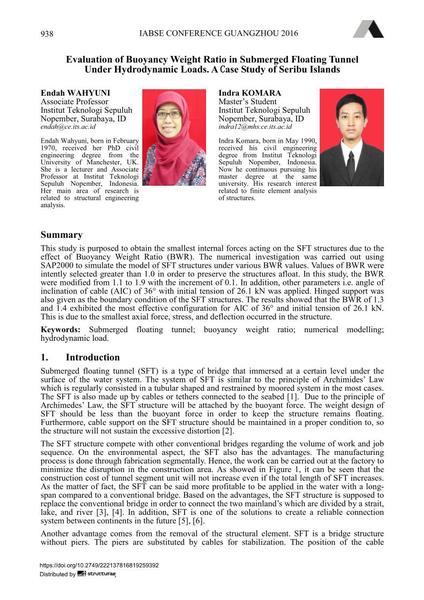Evaluation of Buoyancy Weight Ratio in Submerged Floating Tunnel Under Hydrodynamic Loads. A Case Study of Seribu Islands

|
|
|||||||||||
Détails bibliographiques
| Auteur(s): |
Endah Wahyuni
Indra Komara |
||||
|---|---|---|---|---|---|
| Médium: | papier de conférence | ||||
| Langue(s): | anglais | ||||
| Conférence: | IABSE Conference: Bridges and Structures Sustainability - Seeking Intelligent Solutions, Guangzhou, China, 8-11 May 2016 | ||||
| Publié dans: | IABSE Conference, Guangzhou, China, 8 – 11 May 2016 | ||||
|
|||||
| Page(s): | 938-945 | ||||
| Nombre total de pages (du PDF): | 8 | ||||
| Année: | 2016 | ||||
| DOI: | 10.2749/222137816819259392 | ||||
| Abstrait: |
This study is purposed to obtain the smallest internal forces acting on the SFT structures due to the effect of Buoyancy Weight Ratio (BWR). The numerical investigation was carried out using SAP2000 to simulate the model of SFT structures under various BWR values. Values of BWR were intently selected greater than 1.0 in order to preserve the structures afloat. In this study, the BWR were modified from 1.1 to 1.9 with the increment of 0.1. In addition, other parameters i.e. angle of inclination of cable (AIC) of 36° with initial tension of 26.1 kN was applied. Hinged support was also given as the boundary condition of the SFT structures. The results showed that the BWR of 1.3 and 1.4 exhibited the most effective configuration for AIC of 36° and initial tension of 26.1 kN. This is due to the smallest axial force, stress, and deflection occurred in the structure. |
||||

